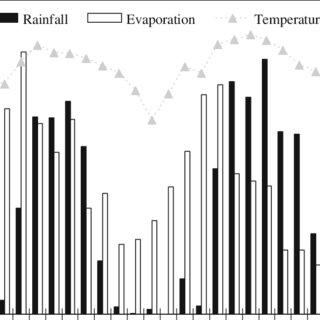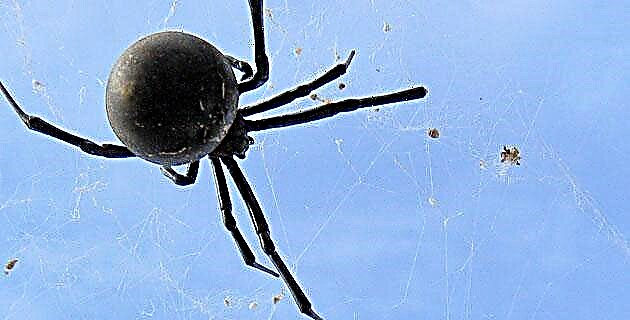
In any place, at any time, spiders can appear to remind you that, despite their tiny size, they are capable of creating incredible fabrics that can withstand even the impact of a bullet!
We were at Morelos, the night was already settling in - with that resounding way of doing it, and its usual noises - around us. So there was no time to lose, we had to camp immediately.
We started to set up our tents -we were a small group of young hikers-, after having swam in the waters of the river Tlaltizapan enough to wish the rest. We were getting ready to sleep when, suddenly, we were invaded by hundreds of spiders As black as night
Terrified, they seemed bigger than they were; We watched them advance undaunted, stubbornly heading east. Following that direction, they walked over backpacks, boots, tents and sleeping bags, as if obeying a single voice of command. As we could and jumping between them, we collected our belongings and fled in a great stampede until we reached the town square.
That unenviable experience aroused in me a great curiosity about arachnids and I began to document myself. Now I know that there are species of spiders that are more sociable than others and that during the breeding season they gather in large numbers until they seem like swarms.
Generally feared -sometimes even with unstoppable terror-, the spiders that we can find in patios, gardens and even inside our houses, are generally harmless and really useful to man. Its diet consists of devouring large quantities of harmful insects such as flies, mosquitoes, cockroaches and even arthropods such as scorpions, among many others. However, it is not easy for most people to accept or feel sympathy for spiders; rather they inspire us fear even though we are in the presence not of a tarantulabut from a garden spider. Why are we afraid of even the little ones? The reasons are probably rooted in the instinctive behavior of our species; that is, they reflect part of the most animal behavior and, therefore, the least rational that we have. But that instinctive rejection can lead to becoming what is known as arachnophobia or sickly and uncontrollable fear of arachnids.
Spiders in history
Spiders - such as amphibians, lizards, lizards and snakes - have been unfairly associated with activities such as witchcraft, spells, hexes, etc. These practices are so common in human behavior that it is not uncommon to find, in the oldest medicine-witchcraft books, curative or malefic recipes in which some part of the body of an arachnid, or the whole of it, including its spiderweb.
The ancient Nahuatl-speaking Mexicans called them touch singular, touch me in plural, and they said to the web tocapeyotl. They distinguished several species: atócatl (aquatic spider), ehecatócatl (wind spider), huitztócatl (spiny spider), ocelotatocatl (jaguar spider), tecuantocatl (fierce spider), and tzintlatlauhqui (detzintli, rear and tlatlauqui, red). That is to say, “the one with the red rear”, the one we know today as black widow or spider capulina, (whose scientific name is Latrodectus mactans); and that, indeed, it has one or more red or orange spots on the central face of its round and columnar or pistosoma.
There is also a town: Xaltocan, which means "place where there are spiders that live in the sand." Other representations of arachnids can be found in the Codex Borgia, in the Codex Fejérvári-Mayer and in the Codex Magliabecchiano. A very interesting symbolization appears in the black volcanic stone cuauhxicalli (container for sacrificed hearts), where the spider is associated with nocturnal creatures such as an owl and a bat.
As we can see, spiders were closely linked to the mythology of the ancient Mexicans and a precious example is the one exposed by the great Mexicanist Eduard Seler: "the god who comes from heaven has dropped into a web ..." to the ehecatócatl, or spider of the wind, belonging to that species of arachnid that travels using the same cobwebs.
Most of the arachnids are nocturnal, and this was accurately noticed by the ancient Mexicans. Why would they prefer to be more active at night? The answer seems to be that in the dark they more easily evade their natural enemies and are not exposed to high temperatures, which could dehydrate and kill them.
Bulletproof Cobwebs
If we talk about the work of these tireless weavers, we must say that the threads of cobwebs are stronger and more flexible than steel cables or wires of the same diameter.
Yes, as incredible as it may seem, it was discovered very recently that at least one species of arachnid from the jungles of Panama has a web so strong that, without breaking, it resists the impact of a bullet. This has motivated the realization of painstaking research, which will allow the manufacture of bulletproof vests possibly lighter and, therefore, much more comfortable than the current ones.
Marijuana spiders
Scholars of insects o entomologists They have done rigorous research to try to explain if spiders make their webs following a certain methodology. They have found that such an order exists, and that spiders not only take into account the position of the sun and prevailing winds; They also calculate the resistance of their fabrics and the resistance of the materials on which they will be anchored, and they make non-sticky silk paths to be able to move on that destined to their prey.
The curiosity of some arachnological scientists has led them to carry out the most bizarre investigations, such as subjecting some species of spiders to marijuana smoke. The result was the production of totally formless cobwebs by affecting -under the effects of the drug- the pattern of tissue that each species follows.
Thousands of species of spiders
Spiders belong to the class of arachnids and to the order Araneidae. Currently approximately 22,000 are known, of which two: the black widow and the violinist they are the most poisonous and we can find them all over the world.
Capulina (Latrodectus mactans), violinist (so called because it has a violin-like design on its prosoma) and brown recluse (Laxosceles reclusa) produce toxins so powerful that they have been considered the most dangerous on the planet, even from Capulin is claimed to have 15 times more potent venom than that of the rattlesnake.
The poisons of these spiders attack the nervous system and are therefore called neurotoxic, gangrenous or necrotizing. That is, they cause the rapid deterioration of the tissues, causing gangrene and destruction of the cells of their prey; likewise, the venom of the capulin is neurotoxic and that of the violinist is necrotizing.
Love between spiders is a matter of life and death for males
In the group of spiders, the females are generally larger than the males; they have the rare habit of turning their sexual appetite into food, once intercourse is over. This means that once the lovemaking has been completed, they devour their partner without charge of conscience.
For this very understandable reason, in some species, the male has the foresighted and healthy habit of tying the female with loops of cobweb thread; In this way she can copulate properly, and survive the love affair without having to make a humiliating and hasty escape.
The spider has a sac called the seminal receptacle, in which it receives and keeps the sperm alive for a long time in order to inseminate its eggs as necessary. Most jealously guard the fertilized eggs until small spiders hatch from them which, after 4 to 12 successive shedding of skin, will reach adult size and continue with the life cycle of the species.
The life span of spiders is variable and depends on the species. Tarantulas, for example, live up to 20 years, violinists live from 5 to 10 years, capulinas from 1 to 2 and a half years, and others only a season of a few months.
Tarantulas in danger of extinction
Curiously, the largest spiders, tarantulas and migalas, are the ones that are in the greatest danger of extinction. Many people kill them as soon as they see them, and they are also hunted for the purpose of selling them as pets to people who are ignorant that their fondness for "rare" or "exotic" animals can make many species disappear.
Spiders are animals arthropods (jointed-legged animals) of the arachnid class, characterized by having the body divided into two parts: cephalothorax and abdomen or opisthosoma, four pairs of legs in the cephalothorax, and organs (called rows) placed at the end from the abdomen that secrete a silky thread-like substance. With this they weave a network called spider web or cobweb, which they use to catch the insects on which it feeds, and to move by hanging from it.
They have several pairs of eyes and ocelli (underdeveloped eyes) and a pair of appendages in front of the mouth, called chelicerae.
These appendages end in a hook into which a poisonous gland empties; They also have another pair of appendages behind the mouth, called pedipalps, with numerous sensory organs.
They have a pair of lungs or pulmonary sacs attached to networks of respiratory channels called tracheas, which communicate to the outside through the so-called stigmata: holes with covers, which they open and close to perform their respiratory function.
To get their food they surround the prey with the spider web; now immobile, they dedicate themselves - without any danger - to sucking it with their sucking stomach until it is empty.
After digesting it, they excrete the victim's waste, which basically consists of guanine and uric acid, which they expel in dry form through the anus.











